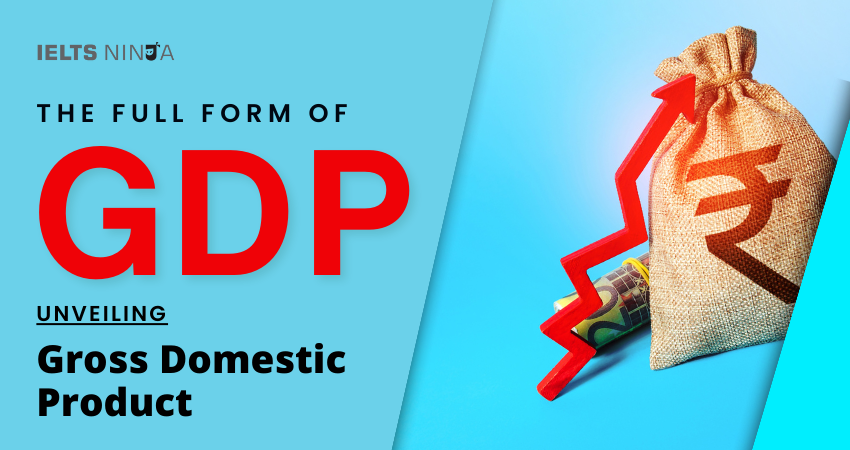In the realm of economics and finance, “GDP” is a fundamental abbreviation that serves as a key indicator of a nation’s economic health and performance. The full form of GDP, which stands for Gross Domestic Product, is a comprehensive measure of the total economic output of a country within a specific period. It plays a crucial role in assessing the size and growth of an economy. In this comprehensive guide, we will explore the details of GDP, its significance, and how it is calculated.
What is GDP?
Gross Domestic Product (GDP) is a quantitative measure that represents the total value of all goods and services produced within a country’s borders during a specific time frame, usually a quarter or a year. It is a critical tool for economists, policymakers, and businesses to gauge the economic performance and standard of living within a nation.
Key Components of GDP
GDP is typically divided into three main components:
- Consumption (C): This component represents the spending by households on goods and services, such as food, clothing, healthcare, and entertainment.
- Investment (I): Investment includes spending on capital goods, such as machinery, buildings, and infrastructure, by businesses and the government. It also encompasses changes in inventories.
- Government Spending (G): This component reflects the expenditure by the government on public services, defense, education, and other programs.
The formula for GDP is often expressed as: GDP = C + I + G + (X − M)
Where:
- ‘C’ represents consumption,
- ‘I’ represents investment,
- ‘G’ represents government spending, and
- ‘(X−M)’ represents net exports (exports minus imports).
Types of GDP
There are several variations of GDP used to analyze different aspects of an economy:
Nominal GDP:
This is the total value of goods and services produced in current market prices without adjusting for inflation.
Real GDP:
Real GDP adjusts nominal GDP for inflation or deflation, providing a more accurate measure of economic growth.
GDP Per Capita:
This metric divides the GDP by the total population of a country, giving an average income per person and indicating the standard of living.
GDP by Sector:
GDP can be analyzed by sector, such as agriculture, industry, and services, to understand the composition of economic activity.
यह भी पढ़ें: सर्वश्रेष्ठ ऑनलाइन आईईएलटीएस कोचिंग एवं प्रशिक्षण अकादमी
Significance of GDP
GDP holds immense significance for several reasons:
Economic Health:
GDP serves as a barometer of a country’s economic health. A rising GDP generally indicates economic growth and prosperity.
Policy Evaluation:
Policymakers use GDP data to evaluate the impact of economic policies and make informed decisions about fiscal and monetary measures.
Standard of Living:
GDP per capita reflects the standard of living within a country, providing insights into income distribution and quality of life.
International Comparisons:
GDP allows for comparisons of economic performance between countries, aiding in global economic analysis.
Business Planning:
Businesses use GDP data to make investment and expansion decisions, as it provides insights into market conditions and consumer demand.
Challenges in GDP Calculation
While GDP is a valuable metric, it has its limitations. It does not account for factors like income inequality, non-market transactions (e.g., household work), and environmental impact. Additionally, it may not fully capture the well-being and quality of life of a population.
निष्कर्ष
Gross Domestic Product (GDP) is a cornerstone of economic analysis, providing a comprehensive measure of a country’s economic activity and performance. It serves as a vital tool for assessing economic health, making policy decisions, and understanding the standard of living within a nation.
However, GDP should be considered alongside other indicators and metrics to provide a more complete picture of an economy’s well-being and sustainability. As economies continue to evolve, GDP remains a central reference point for evaluating economic progress and prosperity.








